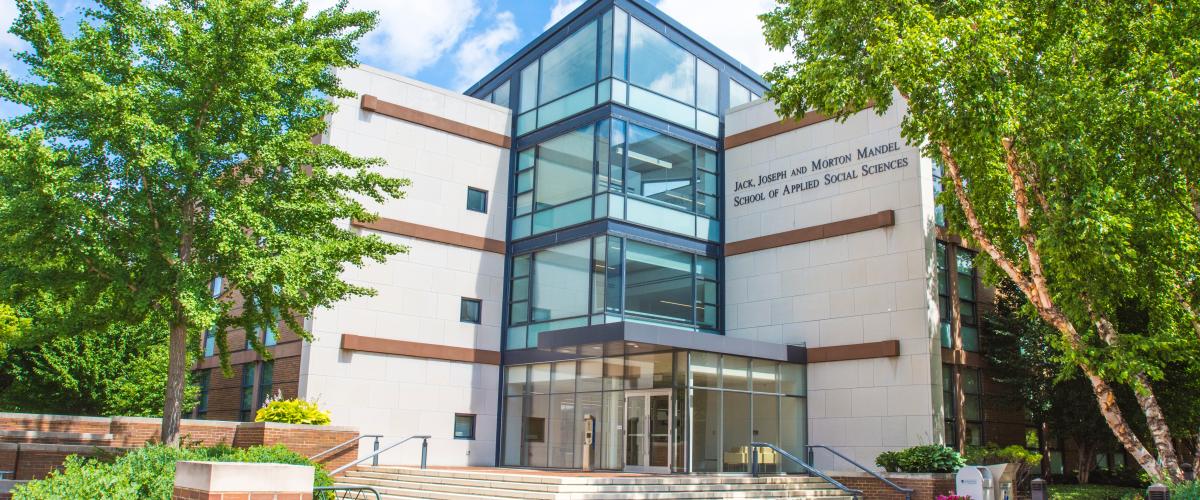November is Nonprofit Awareness Month, a time that celebrates and promotes the support of nonprofits in the United States. This month is especially relevant to Cleveland, which has a long and thriving history of nonprofit innovation—the city is the birthplace of the first community chest (a predecessor of the United Way) in 1913, created the first community foundation in the world (the Cleveland Foundation) in 1914, and is home to a world-renowned healthcare infrastructure.
It comes at no surprise then that Cleveland's economic prosperity and wealth during the early part of the 1900s also spawned an active philanthropic movement here, resulting in over 2,000 nonprofits in the Greater Cleveland area today. It’s also why the Jack, Joseph and Morton Mandel School of Applied Social Sciences began offering the Master of Nonprofit Organizations (MNO) program—it’s one of the first nonprofit leadership programs in the U.S. and one of just nine graduate programs to be fully-accredited by the Nonprofit Academic Centers Council.
Now more than ever, managing nonprofit organizations requires a commitment to doing good plus the skills to carry out an agenda of change.
In honor of Nonprofit Awareness Month, we’ll be spotlighting some of our MNO students and alumni.
Answers have been edited for clarity and length.
Tony Thomas (MSSA ‘84)
- Alumnus, Mandel School
- Executive Director of Welcome House since 1999, an agency serving people with developmental disabilities (IDD)—what started as a parent-led organization in 1972, with the goal of opening one group home for persons with IDD, now serves over 200 people. They just celebrated their 50th anniversary.
1. What are you most proud of having accomplished at your nonprofit organization?
There have been several proud moments but most recently was leading this agency during the pandemic when it looked like many social service organizations might collapse due to COVID-19. We did not collapse but have actually thrived during some very dark moments. The other proud moment came in 1999 when a group of families who had sons and daughters with developmental disabilities took a chance on a young social worker and hired me as executive director.
2. What is the biggest challenge of working in the nonprofit sector?
The biggest challenge is the workforce crisis. As an agency we usually have over 400 staff who care for persons with IDD in our 42 group homes, two apartment buildings and 30+ condominiums and apartments. But we now operate with 80 less staff than a year ago. We are trying all methods of accessing more staff and are reframing this from a workforce crisis to a workforce opportunity. This is also helping us think about delivering services in a different way.
3. What led you to attend the Mandel School, and how has your CWRU experience prepared you to work in the nonprofit sector?
The education I received from the Mandel School led to me thinking of myself as a potential leader. Thinking is one thing, doing is another. The doing part was my field experience and then a subsequent internship at an organization that was doing good work for people with developmental disabilities. This combination of dedicated faculty at Mandel and my very positive field experience led me to accept a higher-level leadership position at a nonprofit.
4. What is your favorite memory of CWRU?
I would say a favorite memory was the rigor and challenge created by my professors (I had some very interesting, memorable and colorful faculty). I was constantly challenged to think clearer, better and sharper by many faculty members at the school. There were times when I resented this but came to understand it as a way of preparing me for a future beyond a graduate school setting. And, for a future to lead others and be cognizant of my faults in the process of doing so.
5. What advice do you have for others hoping to work in nonprofit organizations?
I practice something called “servant leadership,” which means I lead an organization in a way that recognizes and respects all levels of the company, but paying particular attention to the frontline staff and clients. I would also say to build strategic alliances across all agency boundaries and to not just focus on your own small leadership team. The other recommendation I have is to think about strategy and operations (two separate parts of a whole). These two concepts exist simultaneously in nonprofits and for-profits, but the leader must play the scale of these two concepts with equal weight on both sides.
6. Knowing Cleveland is unusually supportive of the nonprofit sector, can you talk a bit about philanthropy in Cleveland?
WOW… GO CLE. Cleveland is so special when it comes to philanthropy and nonprofit work. This became so evident during the pandemic when the Cleveland Foundation, Mt. Sinai Health Foundation, Deaconess Hospital of Cleveland and several others started out by trying to raise $1 million, then $2 million, and eventually developing over $6 million dollars of philanthropic support for local nonprofits to buy needed personal protective supplies during the first year of the pandemic. It was incredible support, and many social service agencies benefited from their help (we sure did). The other area of support we received was from the Cleveland Foundation and our local County Board of Developmental Disabilities—both have helped us set up an Employer Resource Network in the Cleveland area to help our many social service agencies deal with challenging staffing situations. Again and again, the foundation and philanthropic community in Cleveland comes to the rescue.
7. What are some meaningful ways someone can celebrate Nonprofit Awareness Month?
Volunteer, get involved in a nonprofit entity, expand your awareness of what nonprofits do in your local community, serve on a nonprofit board, or attend a function and help a nonprofit with their annual appeal—there are so many ways to get involved and celebrate Nonprofit Awareness Month.




